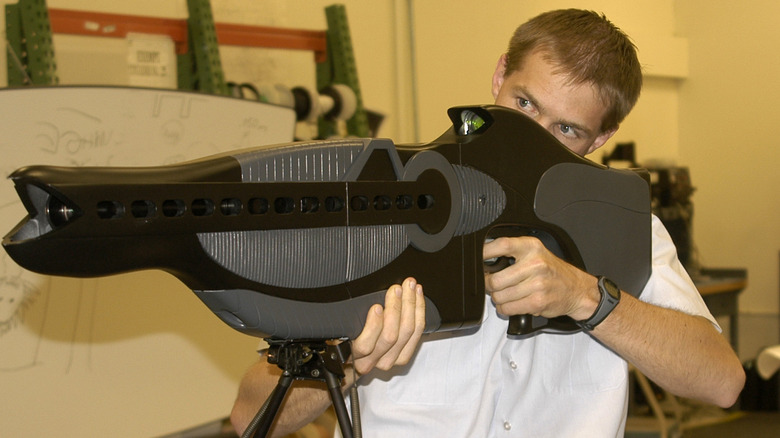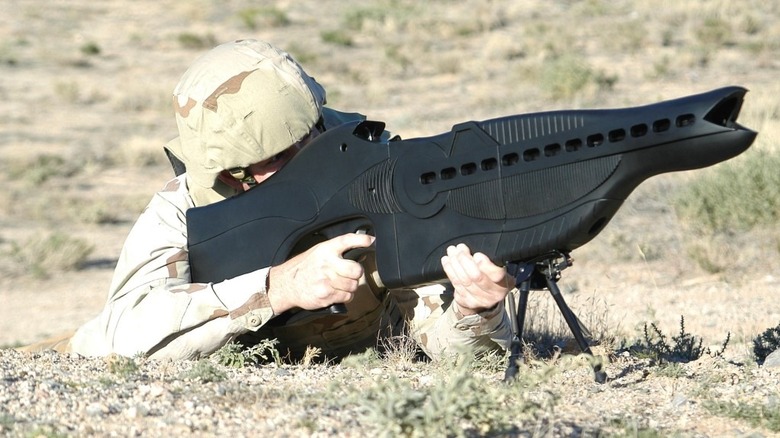How The U.S. Military Developed A Rifle That Caused Temporary Blindness
For good or ill, the U.S. military has proven highly proficient at developing futuristic weapons to destroy enemy targets or otherwise render them combat ineffective. The B-2 Spirit stealth bomber, for example, can drop 40,000 pounds of ordnance on a target without radar even seeing it's there. Laser and directed energy weapons are approaching the point where it may no longer be within the realm of science fiction. Lockheed Martin's HELSI project has shown promise in aiding the elimination of airborne threats with laser technology.
Occasionally, the answer to a problem requires more tact and care than dropping a bomb from low-orbit or burning it out of existence with a high energy laser. You can't "turn down" a bomb, but you can dial down a laser to be less-lethal and handle threats in a way that doesn't cause bodily injury to the target. This would be useful in an area with a large civilian presence, or used by law enforcement agencies to deal with riots. That's how the U.S. Air Force was able to come up with the PHaSR, a weapon straight out of Star Trek.
Eventually outlawed
The PHaSR or Personnel Halting and Stimulation Response is a man portable non lethal laser device that looks like it would be the weapon of choice for the more diplomatic and calm Captain Jean Luc Picard from Star Trek: The Next Generation, than the shoot first and ask questions later Captain James T. Kirk from the original Star Trek series. The PHaSR worked by firing a low energy laser directly into the eyes of a target "dazzling" them into submission and rendering them temporarily blind. Temporary blindness, while still somewhat violent, is a less extreme tactic than using conventional weaponry, like guns, to stop a potential attacker. It limits collateral damage.
The weapon was developed at Kirtland Air Force Base in New Mexico and was scheduled to be completed in 2006. It was designed in part for the military, but also eventual use by law enforcement. On the surface, it looks like the PHaSR could have been an less damaging solution to disable potential threats. But the very use of the weapon violates a treaty proposed by the United Nations set forth in the 1980 Convention on the Use of Certain Conventional Weapons and amended in 1995 to include blinding weapons. Suffice to say, the weapon was shelved after the United States agreed to the Geneva Convention's laser terms in 2009.

